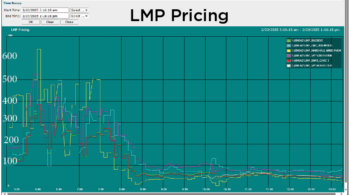Lindsborg is Hiring Apprentice Lineman
The City of Lindsborg is accepting applications for an Apprentice Lineman. Daily duties include but are not limited to the construction, operation, and maintenance of the overhead and underground electric distribution system. Other duties include trimming trees, maintaining banners, and festival setup, as well as other duties deemed necessary.
The City of Lindsborg offers a full benefits package including health & dental insurance, KPERS retirement, paid vacation and sick leave, paid holidays, uniforms, as well as an optional AFLAC, and Security Benefit 457 retirement plan. The successful applicant will be required to pass a pre-employment drug screen and physical test and must possess a high school diploma/GED and a valid Kansas driver’s license. It will be required to obtain a Kansas CDL while in the Apprenticeship Program.
Salary based on qualifications. Applications and complete job descriptions are available online at www.lindsborgcity.org/jobs or at Lindsborg City Hall, P. O. Box 70, Lindsborg, KS 67456, (785) 227-3355. The position will remain open until filled. EOE.

 The City of Osawatomie is hiring a Water Plant Operator to manage the production and treatment of the city’s drinking water. This full-time role involves monitoring equipment, performing maintenance, and ensuring efficient operation under the supervision of the Water Plant Superintendent.
The City of Osawatomie is hiring a Water Plant Operator to manage the production and treatment of the city’s drinking water. This full-time role involves monitoring equipment, performing maintenance, and ensuring efficient operation under the supervision of the Water Plant Superintendent.
 As the forecasted cold weather loomed on February 6th, pipelines began posting Winter Weather notices effective from the 11th until further notice. This proactive measure was crucial in preparing for the severe conditions brought by Winter Storm Kingston. Throughout the storm, the situation intensified, leading two pipelines to elevate their notices to Operational Flow Orders (OFO), ensuring the stability and reliability of gas supply during this critical period.
As the forecasted cold weather loomed on February 6th, pipelines began posting Winter Weather notices effective from the 11th until further notice. This proactive measure was crucial in preparing for the severe conditions brought by Winter Storm Kingston. Throughout the storm, the situation intensified, leading two pipelines to elevate their notices to Operational Flow Orders (OFO), ensuring the stability and reliability of gas supply during this critical period. The same day also saw the highest gas usage for KMGA LDC cities during the storm, with consumption peaking at 23,534 MMBtu.
The same day also saw the highest gas usage for KMGA LDC cities during the storm, with consumption peaking at 23,534 MMBtu. We are excited to introduce Ken Carney as the newest member of the KMEA Mid-States family. Ken joined us on January 21, 2025, as a Field Services Foreman, bringing with him a lot of experience.
We are excited to introduce Ken Carney as the newest member of the KMEA Mid-States family. Ken joined us on January 21, 2025, as a Field Services Foreman, bringing with him a lot of experience.